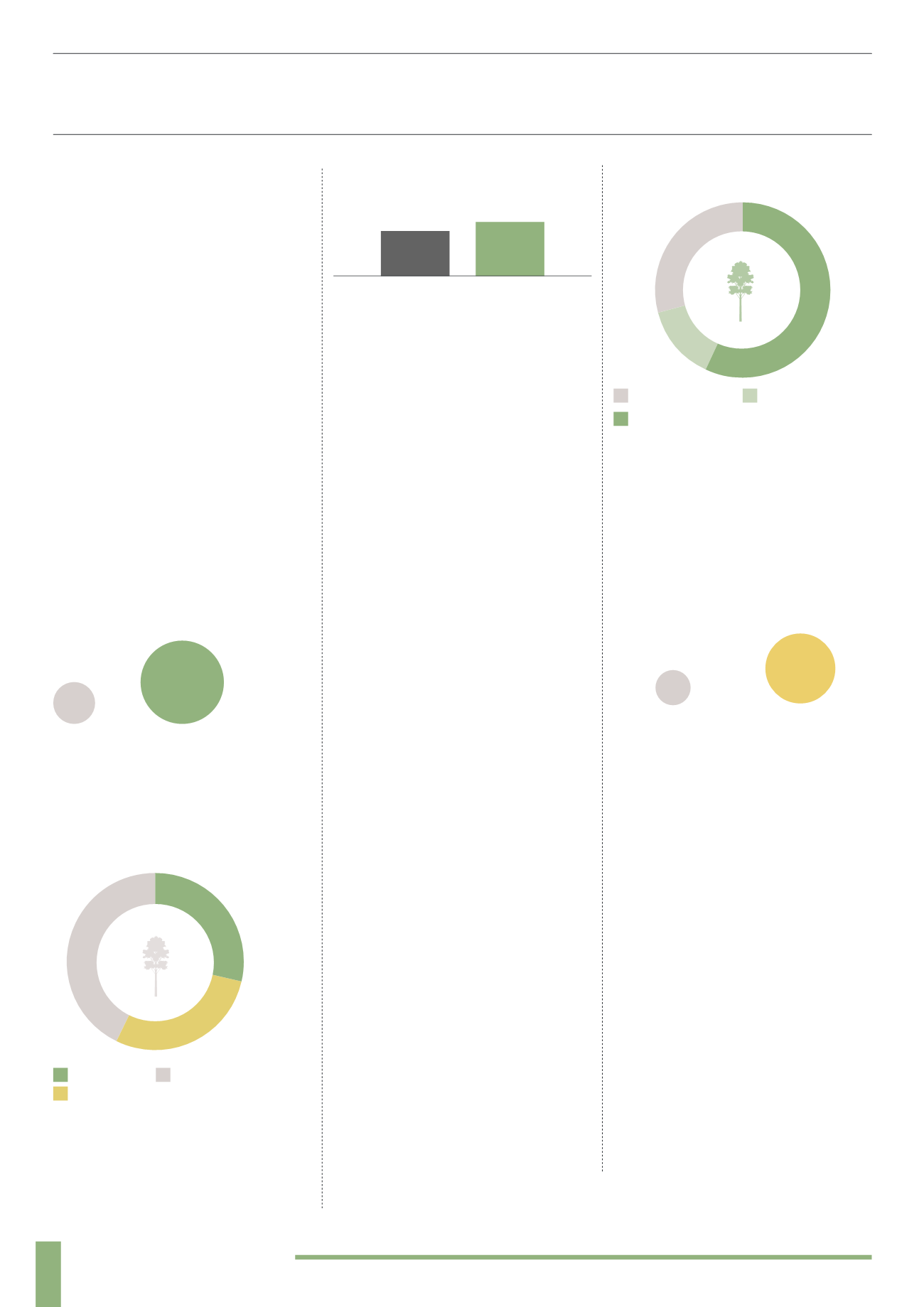
24
PRODUCTPROVIDERSURVEYANALYSIS
Taking the research and analysis a step
further, 60 forestry investment providers
were identified and surveyed, including
all of those that have a product included
within the investment register.
Due to the diverse nature of the forestry
sector, only a 17% response rate to the
survey was achieved. Which, although
disappointing, it has allowed for
proprietary analysis of the providers and
highlights some very interesting trends in
the sector.
The survey was dynamic and included up
to 90 questions depending on which route
the respondent took. Some questions were
mandatory but others were not answered
by all respondents. The most relevant and
insightful questions have been included in
this analysis.
STRUCTURE
Q. Investment Structure
A. For direct asset purchases the investor
will directly own freehold land, timber
ownership rights or loan notes. For UCIS,
the investor owns shares in the investment
company.
Q. What is the term of the investment?
A. Investments are predominantly
structured as direct asset purchases but
there are also UCIS investments available.
Q. Underlying Asset
NO
43%
57%
YES
A. 57% of investments were able to be held
within a SIPP. From these, on average they
are currently being accepted by 2 SIPP
providers. 14% of respondents said that
the number of SIPP providers accepting
their investments had increased during the
last 12 months, the other respondents did
not comment on this.
Q. In which country is the land located?
A. Investments are located in Thailand, Sri
Lanka, Brazil, Malaysia and the UK. This
correlates to the investment register which
shows a number of investments based in
tropical locations with fast growing native
tree species.
Q. What tree species is planted on the
land?
A. Teak is the most popular tree species,
accounting for almost half of investments.
Other tree species include agarwood,
eucalyptus and sitka spruce. Again this
correlates closely to the investment register.
CHARACTERISTICS
Q. What is the minimum investment? (£)
A. Minimum investments range from
£5,000 to £40,000. There is one investment
that is focused purely at institutional
investors which starts at £5m. Out of the
investments targeted at retail investors the
average minimum investment is £16,500.
There is no cap on the maximum that can
be invested on any investment.
57%
14%
29%
Open-Ended
Variable
Fixed Term
A. Investment terms are generally open-
ended or variable depending on when the
investor choses to harvest their trees and
sell the timber. Only a small number (14%)
of investments have a fixed term, meaning
that the timber will be sold after a defined
period of time.
Q. What is the planned exit?
A. The planned exit correlates closely
to the investment term, with those
investments that offer a fixed investment
term also offering to pay the principal back
to investors as part of the exit. The vast
majority (86%) of investments rely on the
open-market sale of timber. This supports
the investment register.
Q. What currency is the investment in?
A. Almost half the investments are sold
in sterling. Other currencies include US
dollars, Sri Lankan Rupees, Thai Baht
and Brazilian Real. Underlying assets
are predominantly valued in US dollars
and sterling. All returns are paid in the
same currency as the initial investment
way made in. For 50% of investments the
underlying asset is valued in a different
currency than the investment was made in,
meaning that there is added currency risk
to the investment.
86%
Open-Market Sale
86%
Direct Asset Purchase
14%
UCIS
14%
Repayment of Principle
Q. Can the investment be held within a
Personal Pension (SIPP)?
29%
29%
43%
Freehold Land Timber Ownership Rights
Other (Shares / Loan notes)


